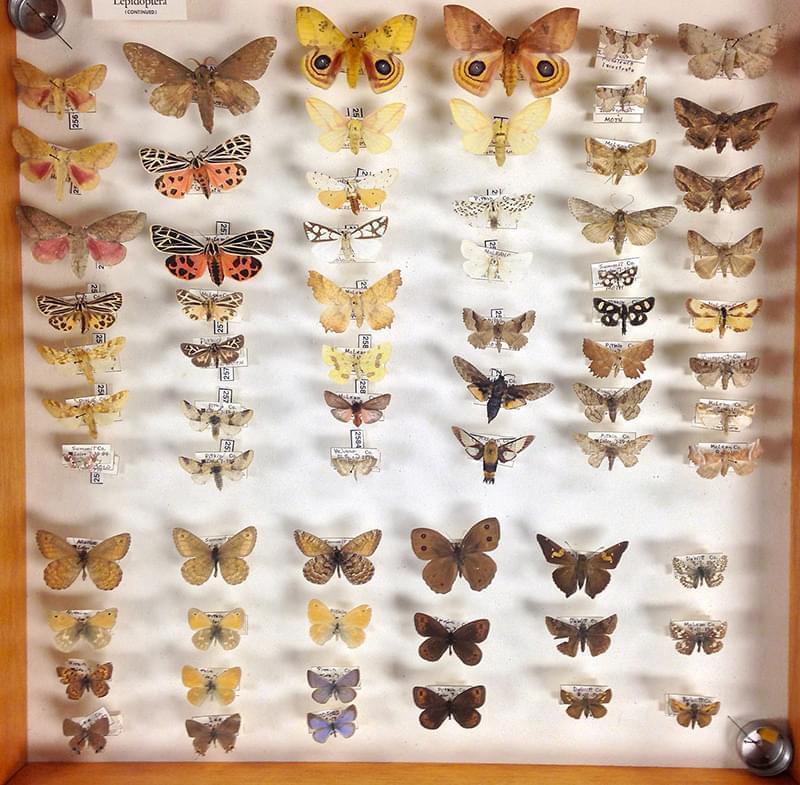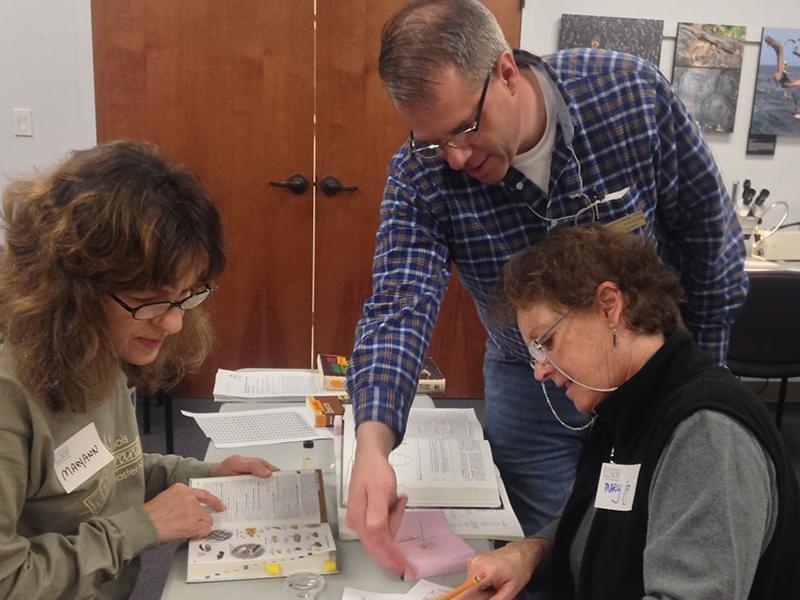Citizen scientists ensure insect collection put to good use

A relatively easy-to-identify case from the Fry collection, containing familiar moths and butterflies
Do you know the difference between a cat flea and a dog flea? Neither do I. But recently, I spent an afternoon among people who were learning.
They were members of the Illinois Grand PrairieMaster Naturalists, a program administered through University of Illinois Extension that draws members from Livingston, McLean and Woodford Counties. They had come to the home base of the Illinois Natural History Survey in Champaign to help entomologists there catalogue an insect collection.
The collection was left behind by James Fry of Heyworth, a dedicated amateur entomologist who passed away a couple of years ago. Most of them were collected by Fry himself between the 1950s and the 1980s, but some were also collected by his son and daughter, many of them for 4-H projects.
I should emphasize this is not the sort of collection that probably comes to mind when you hear the word “amateur.” It consists of more than 2300 individual specimens, which are divided among 41 wood-sided, glass-topped, square cases. Many, but not all of the specimens are labeled with the sort of information that makes them useful to science, especially the date and place where they were collected, and most are also identified by name.
Here’s the thing, though. Identifying insects can be tricky, and if the specimens in a donated collection are to be useful for scientific and educational purposes, it’s critical that their identity is confirmed.
That’s where the Master Naturalists came in. Working in pairs, and with assistance from professional entomologists who circulated around the room, their job was to catalogue the contents of each case.
Some cases were easy, especially the ones housing large numbers of big, familiar species. To illustrate this point, entomologist Joe Spencer gestured toward one with his finger, “Luna moth, luna moth, luna moth . . ..

Master Naturalists Maryann Stork, left, and Mary Jo Adams get some help from INHS entomologist Joe Spencer
Other cases contained tiny puzzles. When I sat down with Master Naturalists Mary Jo Adams and Maryann Stork, they were sorting out whether the specimens in a vial labeled “dog fleas” were named correctly. They were not; in fact, they were cat fleas. As Survey entomologist Joe Spencer explained, examining the length of a tiny spur on a flea’s leg—visible only under magnification—is the way to tell the difference.
Why would anyone care whether the fleas and other specimens in a late twentieth century insect collection from central Illinois are correctly identified? I put this question to Mike Jeffords, a scientist who recently retired from INHS and who is coordinating work on the Fry collection.
In his words, such a collection represents “a window into the insect diversity of that part of the state at the time, something we didn’t have before. Now if someone else wants to examine insect diversity there, they’ve got a point of reference.”
Parts of the Fry collection will be integrated into the larger insect collection maintained by the Natural History Survey for scientific purposes. But other parts will go into wider circulation, as a traveling exhibit for the Master Naturalist program statewide, and for educational purposes at Sugar Grove Nature Center located just south of Bloomington-Normal in Funks Grove.
This disposition of the collection is quite pleasing to Master Naturalist Phil Houser, who took possession of it from the Fry family and put it into the hands of the survey. “They wanted it to go somewhere it would be appreciated and cared for,” he told me, “and that’s where it is now.”

